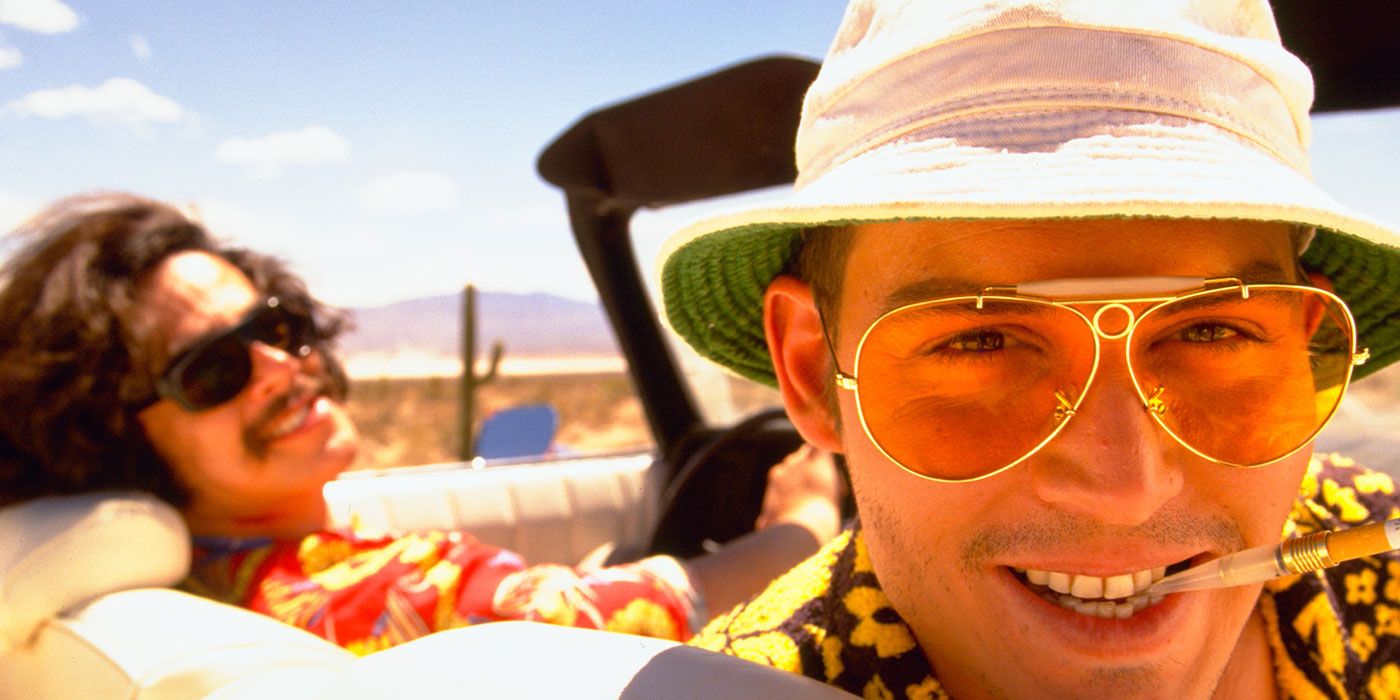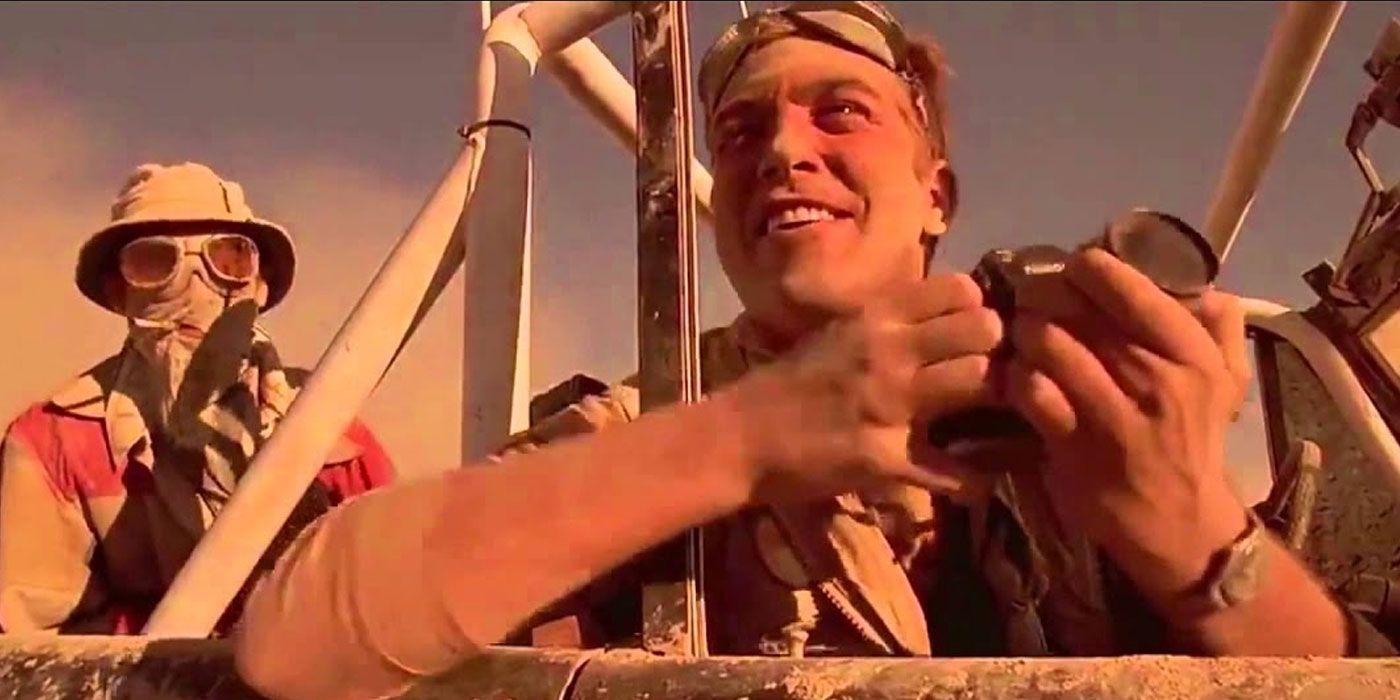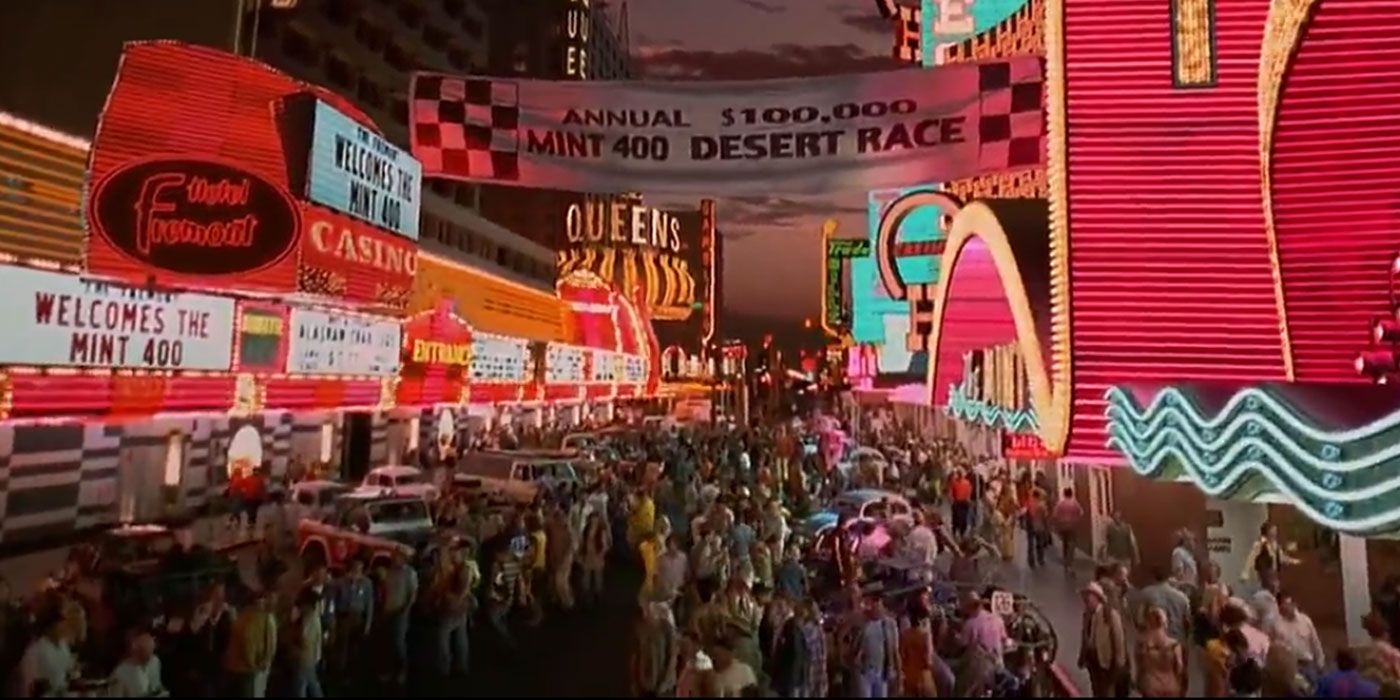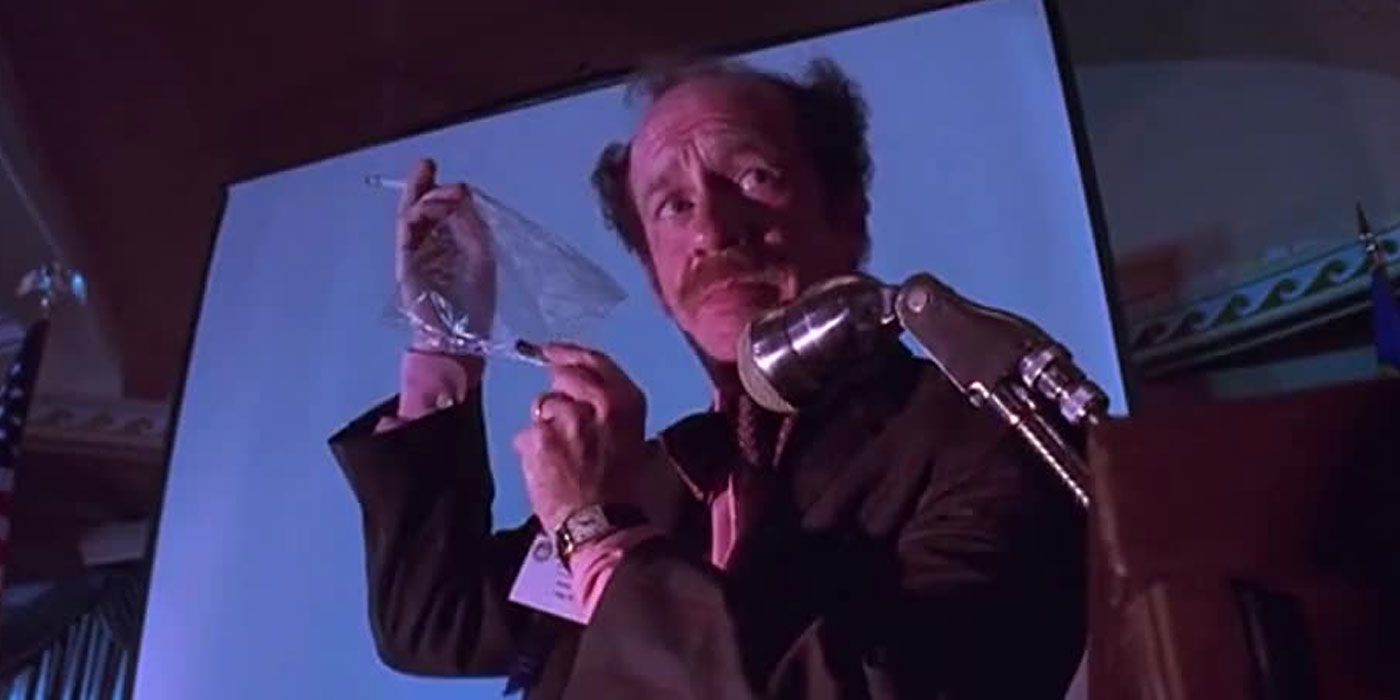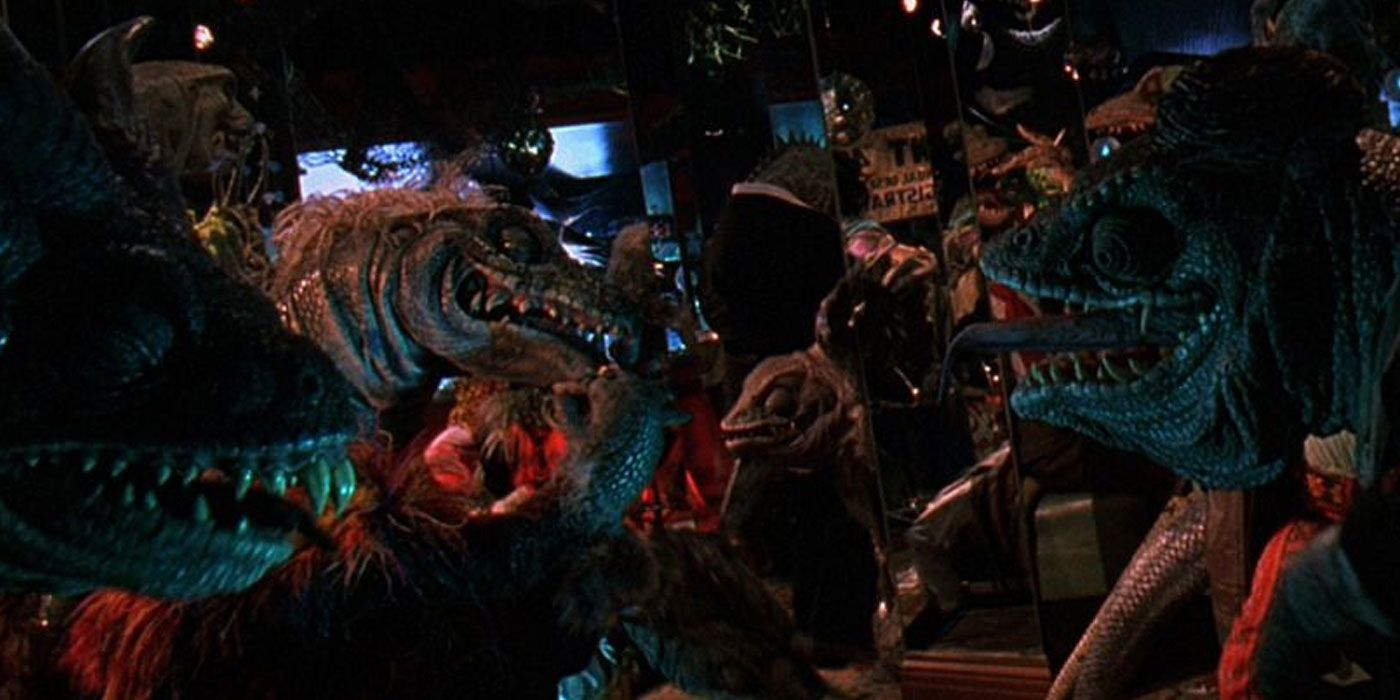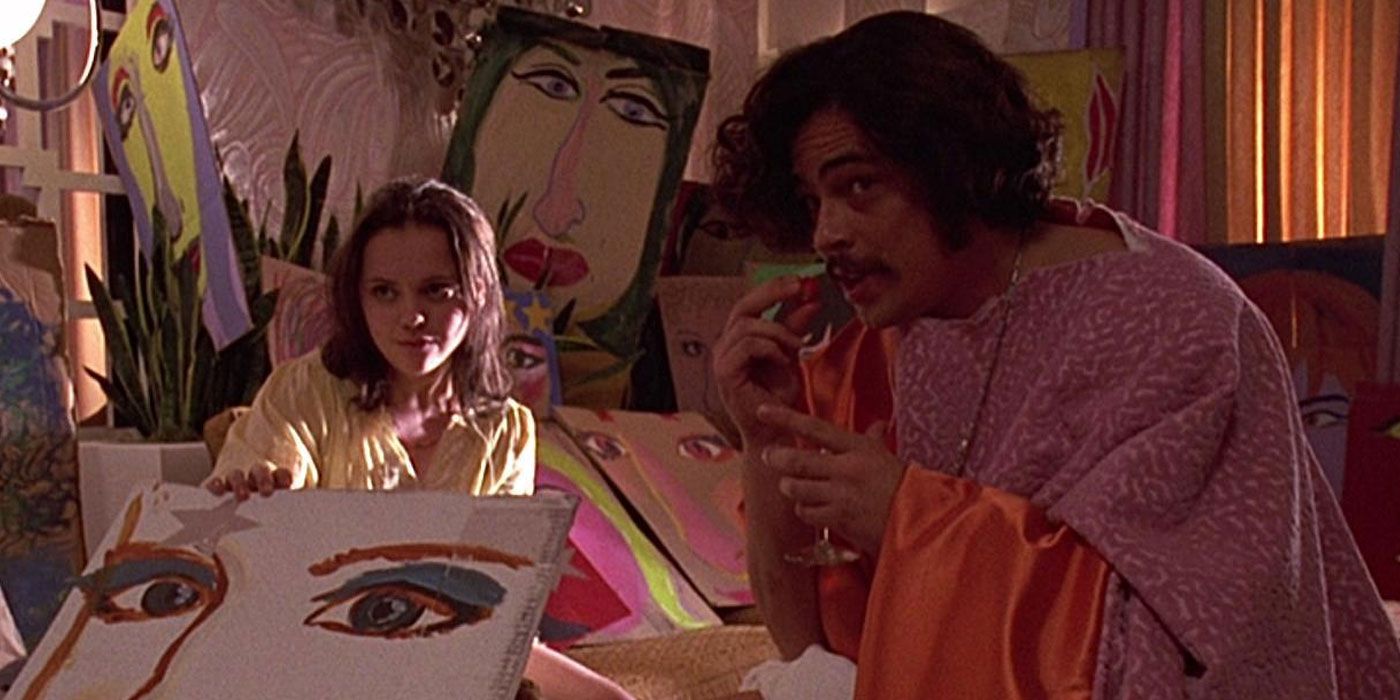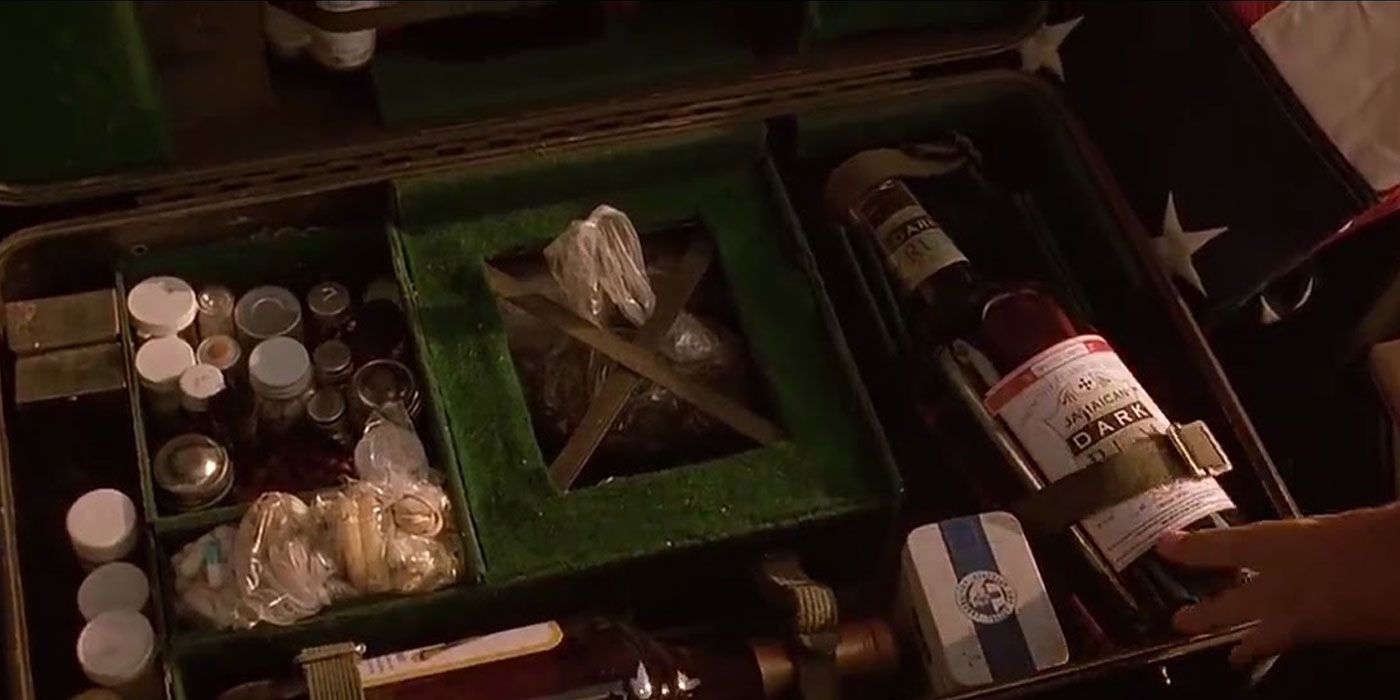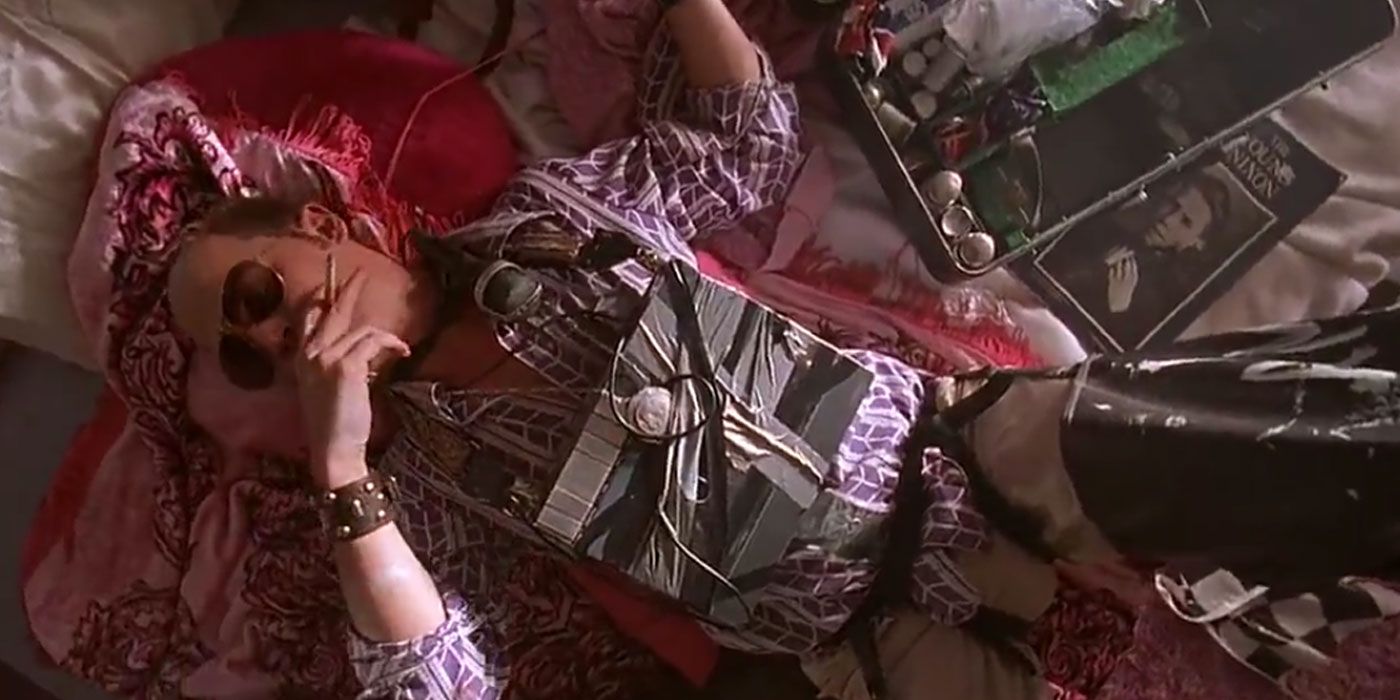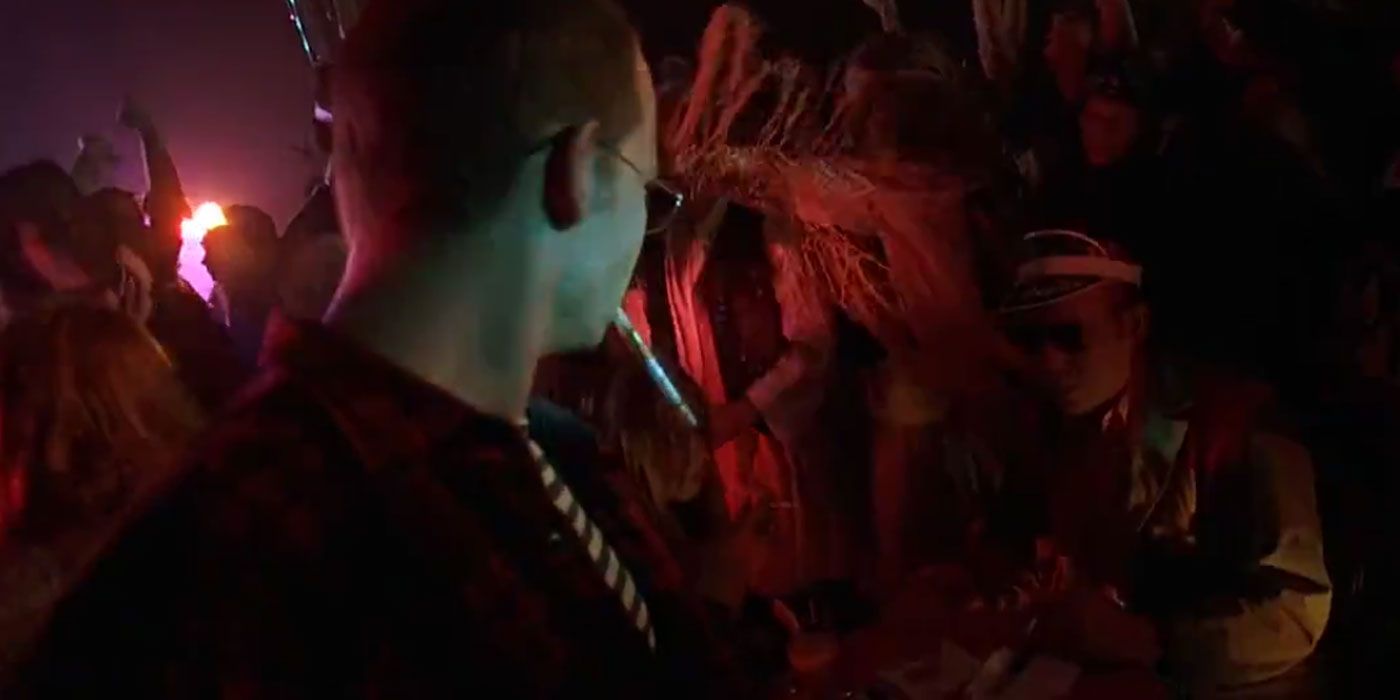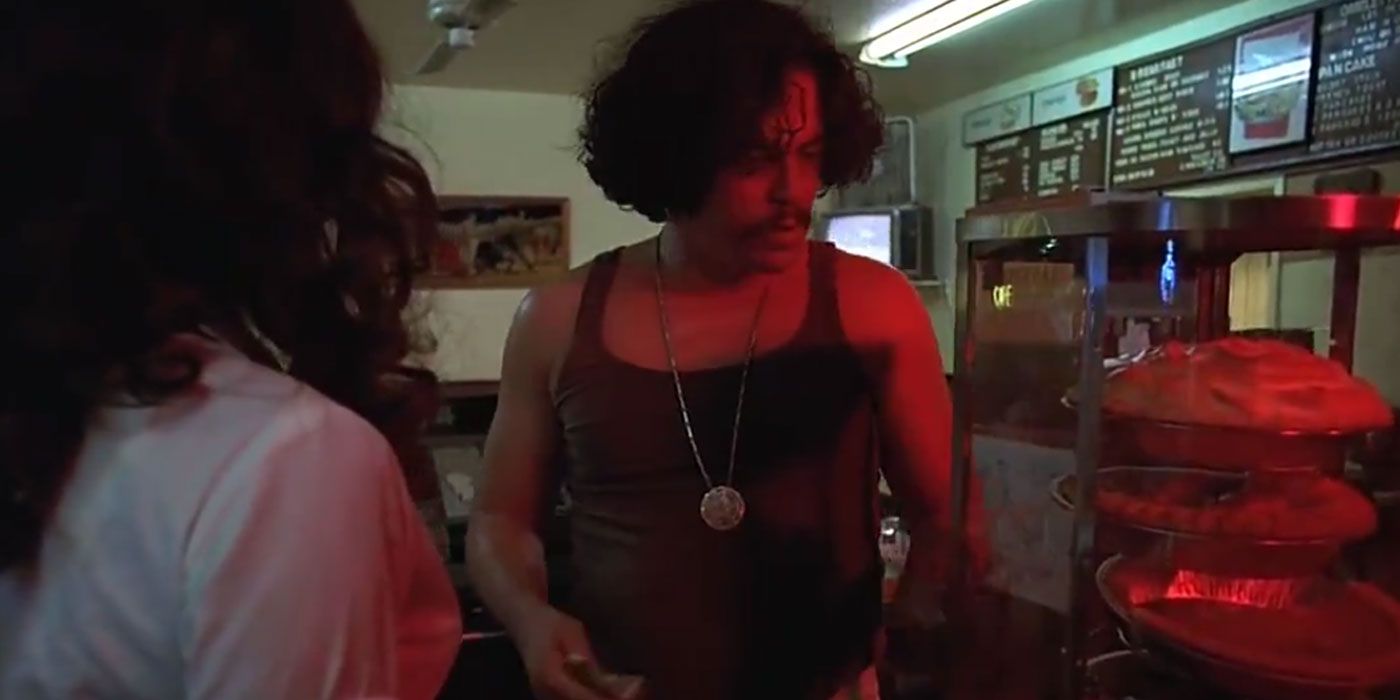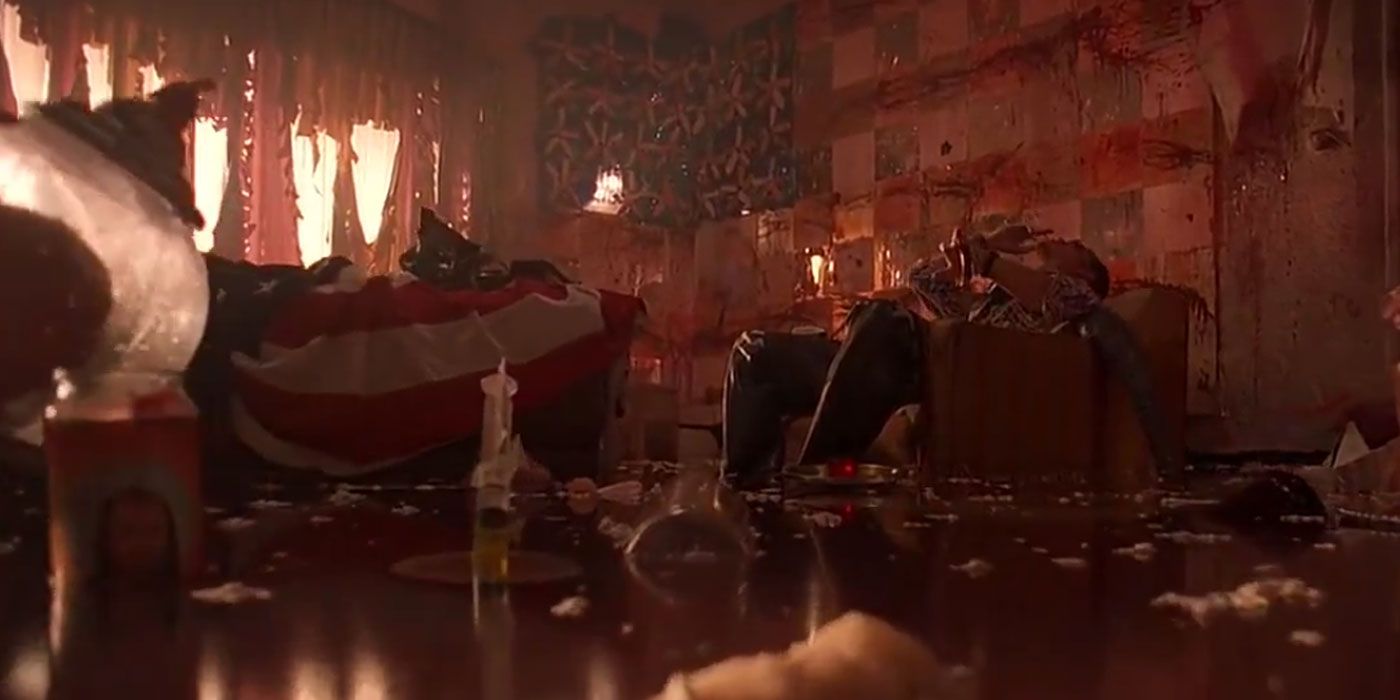When it comes to being one of the best reenactments of a bad drug trip and adaptations around, few come close to the heights that Terry Gilliam's Fear and Loathing in Las Vegas achieved. Though a box office failure, Raoul Duke (Johnny Depp) and his attorney Dr. Gonzo's (Benicio del Toro) savage odyssey to Las Vegas was vindicated by time and became a certified cult classic.
But as faithful as Gilliam’s movie is, there were some things that were lost in the novel’s translation to celluloid. Here are five things that were changed from the book, plus five things kept the same for a movie that’s too weird to live and too rare to die.
CHANGED – Lacerda the Photographer
At the Mint 400 Motorcycle Race, Duke is set-up with the overly-eager photographer Lacerda to help him out. If he was just another eccentric character that Duke and Dr. Gonzo meet in the book, the movie turns him into a minor plot device that chugs the story along.
In the movie, Lacerda off-handedly mentions that Duke and Dr. Gonzo missed the gun club – a group the two actually met, although it got confrontational. Also in the book, Lacerda doesn’t get fired. Instead, it was the driver who lost his job after his driving made Duke spill his beer.
SAME – The Las Vegas Job
To meet the run-time and keep the book’s soul alive, the movie focused solely on the trip to Las Vegas and back. Some elements from the omitted chapters made it to the final cut but generally speaking, the movie centered on Duke and Dr. Gonzo’s debauchery and journalistic duties in Sin City.
Minus some changes and omissions like an acrobatic performance involving a wolverine, Duke’s job in Vegas stayed the same. Some specific circumstances may have been altered, but the core themes and emotions of Duke’s descent into the bitter, drug-fueled black hole of Las Vegas remained intact.
CHANGED – The Drug Convention
The district attorneys’ out-of-touch drug convention was just another strange sequence of events and dialogue in an already trippy movie, but it was actually longer and stranger in its written form.
Said convention was a few chapters long in the book, while the movie doesn’t linger there for more than 10 minutes. The convention’s claustrophobic and misinformed atmosphere remained, though viewers missed the chance to see Duke and Dr. Gonzo (impersonating police officers) mess with an impressionable D.A. by feeding him ludicrous myths about drug users – specifically, how much junkies love beheadings, human sacrifice, sexual deviance, and Satanism.
SAME – Drugs, Drugs, and More Drugs
Thompson’s vivid description of drugs and their effects on the human mind and body are what Fear and Loathing in Las Vegas is best known for, and its film version brings these psychedelic visions to life.
The movie actually improved the book’s hallucinations by literally showing how much of an assault on the senses drug trips are. Memorable highs like Duke’s LSD-induced visit to the reptile bar, the Devil’s Ether walk, and every time his hotel room got trashed during a coked-out frenzy are well-described on paper, but are better realized through visual storytelling. After all, seeing is believing.
CHANGED – Full Frontal Gonzo
The only way that the already repulsive and violent Dr. Gonzo could be worse is if Benicio del Toro imitated everything he said and did in the book. Believe it or not, Duke’s attorney pales in comparison to his written counterpart.
In the book, Dr. Gonzo is high and naked many times, the worst instance being Duke finding his attorney with the under-aged Lucy in their hotel room. Duke’s narration all but deduces that the two had slept together, while the movie downplays this by throwing robes on Dr. Gonzo and merely hinting at what may have transpired.
SAME – Duke’s Narration
Fear and Loathing in Las Vegas is renowned for being one of the most loyal and respectful adaptations of a book, and this is best seen through its use of narration. Every inner monologue and side-comment that Duke utters to himself is directly lifted from Thompson’s writings, with specific passages and quotes found within the book’s pages.
From Duke’s quotable itinerary of illegal substances to reminiscing about his generation’s high water mark that can never be reached again, Gilliam successfully translated Thompson’s verbose ramblings and nuances to the visual language of filmmaking.
CHANGED – Duke’s Recorded Flashbacks
After taking too many drugs derived from the human adrenal gland, Duke blacks out and wakes up in the most trashed hotel room he’s been in. Strapped to his body is his tape recorder, which he uses to fill in the blanks of his drug-addled memory.
This scene was made exclusively for the movie to keep things on track. Duke’s recordings are actually his inner thoughts from the book, where he simply reflects on the previous days before going on more misadventures. Said shenanigans were either cut or shortened, with glimpses of Duke’s hijinks being shown when he replayed his tape.
SAME – The ‘60s
With its soundtrack, drugs, and hang-ups about the worsening state of America, Fear and Loathing in Las Vegas is unmistakably set in the ‘60s but this was almost not the case. After securing studios' financial backing, producers wanted Gilliam to update the book’s setting to the then-current ‘90s.
Gilliam firmly said no, choosing to instead revive the ‘60s in all its highs and hopelessness. The director felt that the original time period justified the characters’ cynicism and excess, while a more topical setting would reduce the story to a raunchy comedy about vices not unlike The Hangover.
CHANGED – Searching For The American Dream
While deconstructing the American Dream is an obvious subtext in the movie, certain book scenes just asked about it upfront. But because they were meandering and tonally clashed with a rather pivotal event, they were either removed or changed.
Such instances include Duke and Dr. Gonzo casually asking a taco stall employee if she knew where the American Dream was and that time Duke happily found it in a circus. These took place after Dr. Gonzo threatened to stab a waitress before buying pie — a scene which, until today, remains one of the most disturbing mood-killers in cinema.
SAME – Mourning The American Dream
A major theme in Thompson’s book was how he and his characters—and, by extension, aging hippies from the early ‘60s—believed the American Dream to be dead. Gilliam successfully transplanted Thompson’s bittersweet melancholia to film, especially in Duke’s poignant closing monologue about his disillusionment in the acid culture.
Viewing the adaptation with this in mind gives new light to the drugs and lunacy. In a way, Duke’s hysteria in Las Vegas was his way of giving the ultimately naïve yet genuine America he missed its last hurrah before letting it die a slow death.

